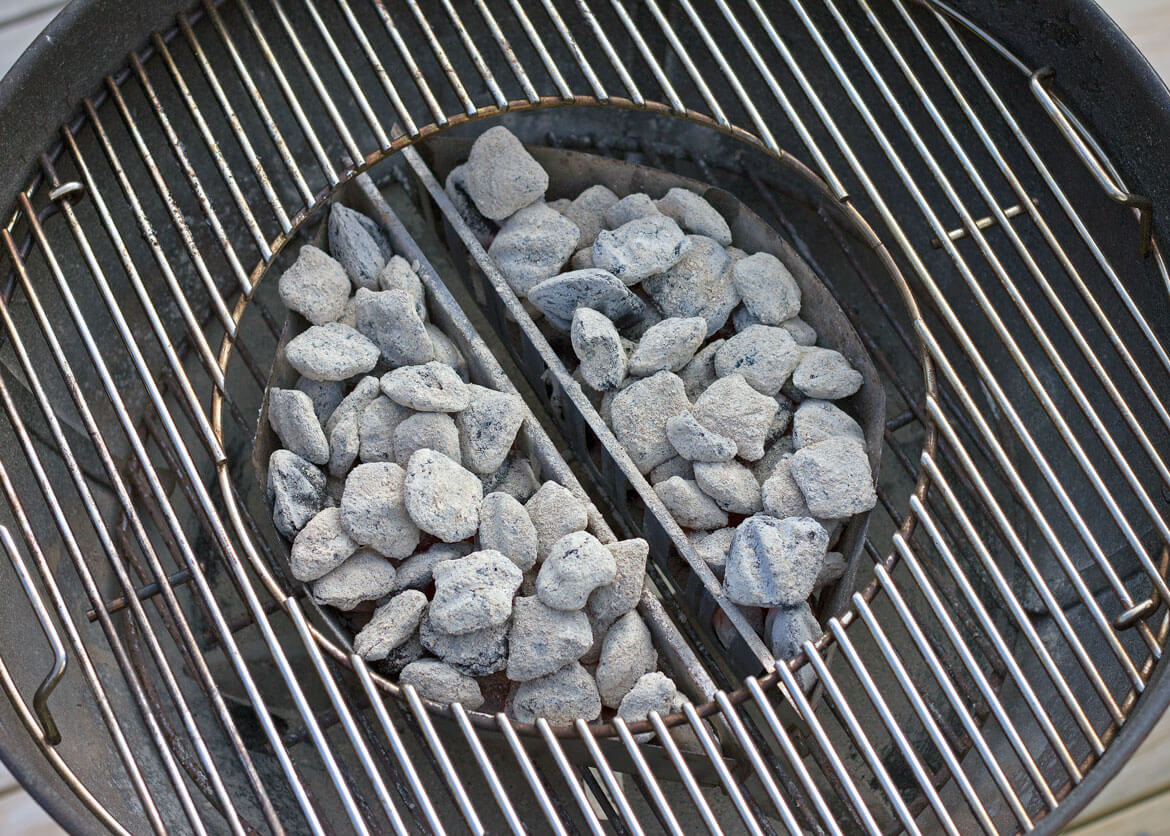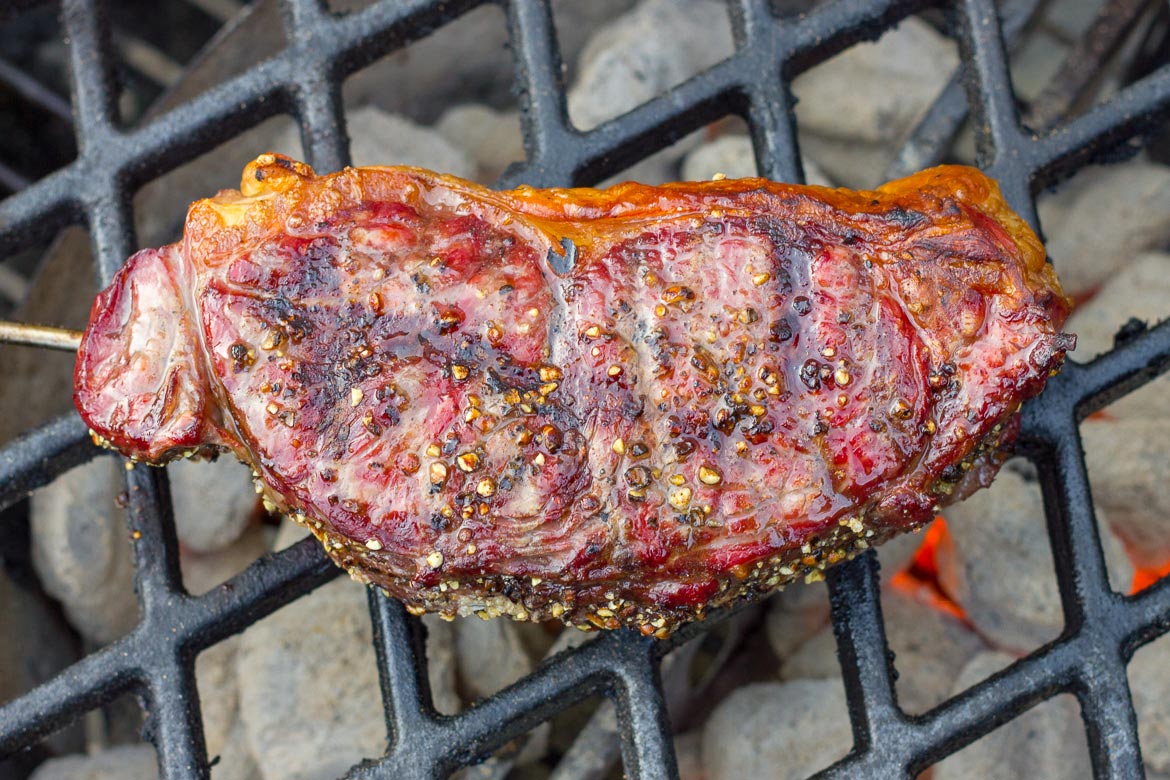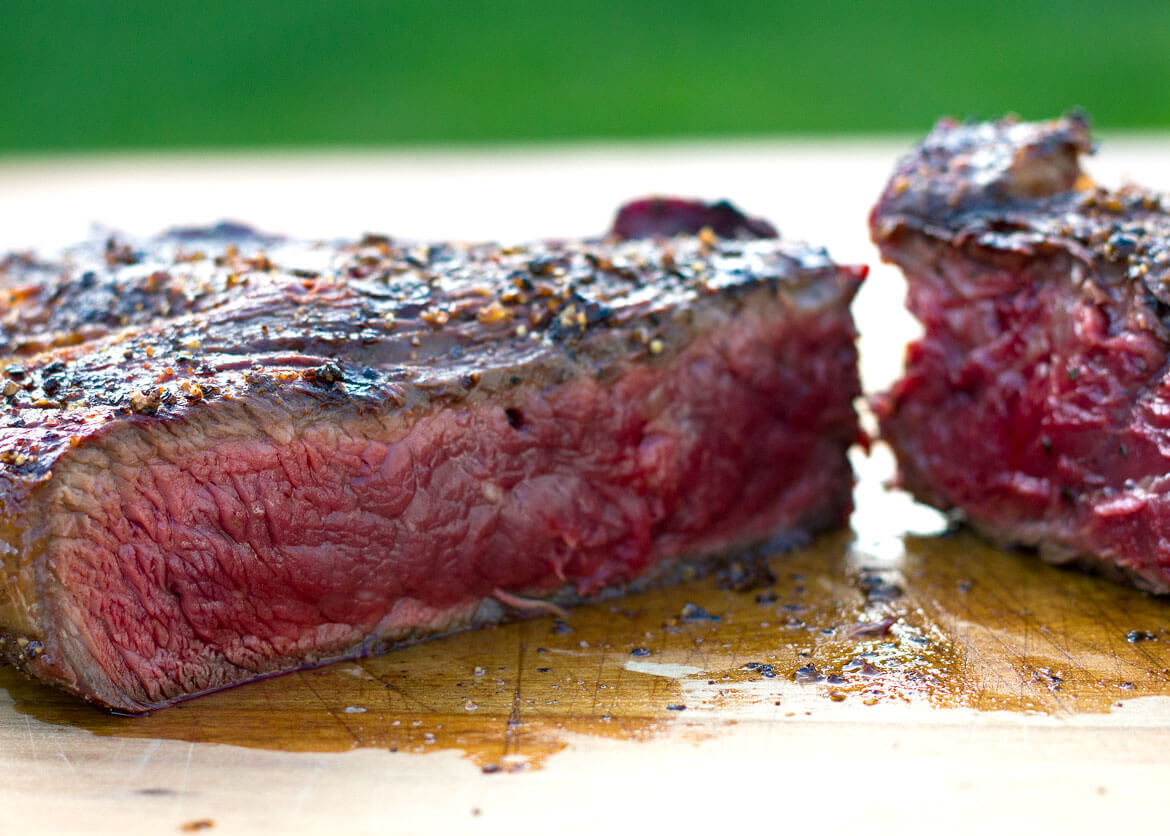Since originally publishing this post back in January 2014 I’ve seen the popularity of the reverse sear rise in popularity across the blogs and Instagram accounts that I follow. This may be that I’m just more aware of it, it’s also a good thing as it’s a great way for cooking thick steak.
Getting perfectly cooked medium rare steak every time is easy with the reverse sear method.
Since originally publishing this post back in January 2014 I’ve seen the popularity of the reverse sear rise in popularity across the blogs and Instagram accounts that I follow. This may be that I’m just more aware of it, it’s also a good thing as it’s a great way for cooking thick steak.
I originally read about the reverse sear at Amazing Ribs, Meathead has a very in depth write up including a rough history timeline.
Over this time my mastery of the technique has also grown so I felt like I owe it to myself to update this post to reflect that.
What Is The Reverse Sear?
To put it simply, the reverse sear is cooking a piece of steak with indirect heat to a certain temperature point before searing it directly over a high heat, in our case, the fire.
While this post shows how to do the reverse sear on a charcoal grill, the method is the same on a gas grill, and you should also have no issues doing this inside with an oven and a stove.
How to Reverse Sear a Steak
The reverse sear method is best used on thick cuts of steak. My favourites are Rib Eye and New York Strip. Make sure you ask your butcher to cut them thick. 1.5 – 2 inches is perfect.
Prepare & Season the Steak

Before you do anything, take the steak out of the fridge so it starts to get to room temperature. If the steak is at room temperature, that means less cooking time to get it to cooked temperature.
For seasoning I enjoy a light brushing of olive oil and a healthy dose of salt and freshly cracked pepper. Set to the side while you prepare the grill.
Start Slow

The reverse sear method requires two types of grilling. Low and slow and hot and fast. The idea is to cook the steak as evenly as possible with a low heat before searing it over a high heat.
Set the grill for 2-Zone cooking. These days I use my Weber Gourmet System with the charcoal baskets in the middle, with the Sear Grate over the top.
I use the outside edge of the grill for my low and slow, the grill temperature should be around 225°F / 110°C but I’ve also done it at 350°F / 180°C. Use a digital thermometer and cook the steak until it reaches an internal temperature of 115°F / 46°C.
Rest the Steak
This is a more recent addition to my reverse sear method. Generally steak is rested after cooking, but this often leads to eating a cold steak, lame. The idea here is to let the steak rest while you crank up the heat in the grill for the sear.
While the steak is resting, fire up some more coals for the final stretch.
Sear it with Fire

With the temperature up and the sear grate nice and hot it’s time to finish the steak off. This is it, the last step to perfect steak.
Take the steak and place directly over the fire and sear it. The timing of this is short 45 – 120 seconds is all it should take depending how hot you get the grill. I take my steak to 130°F / 45°C for a perfect medium rare and flip it only once. You should keep the digital thermometer in for this part.
Once it reaches temp, pull it off the fire and you’re ready to chow down on perfect steak. Enjoy.
 Temperature Guide
Temperature Guide
I like my steak rare. Refer to this guide for hitting the temperature for your perfect steak.
- Rare – 55-60oC
- Medium Rare – 60-65oC
- Medium – 65-70oC
Equipment for the Reverse Sear
The following is a list of equipment used. These are all Amazon Affiliate Links and any purchases made using these links go towards supporting the running of this blog.
- Weber 22.5″ Grill
- Weber Rapid Fire Chimney
- Weber Gourmet BBQ System Hinged Cooking Grate
- Weber Gourmet BBQ System Sear Grate
- Weber Charcoal Baskets
- Kingsford Original Briquettes
- Maverick ET-73 Digital Thermometer
BBQ Like It’s Hot Reverse Sear Examples
Further Reading
- The Food Lab: The Reverse Sear Is the Best Way to Cook a Steak, Period
- Cooking Temps: When to Cook Hot & Fast, When To Cook Low & Slow, And When To Do Both (Reverse Sear)
Any questions? Hit me up in the comments below.
